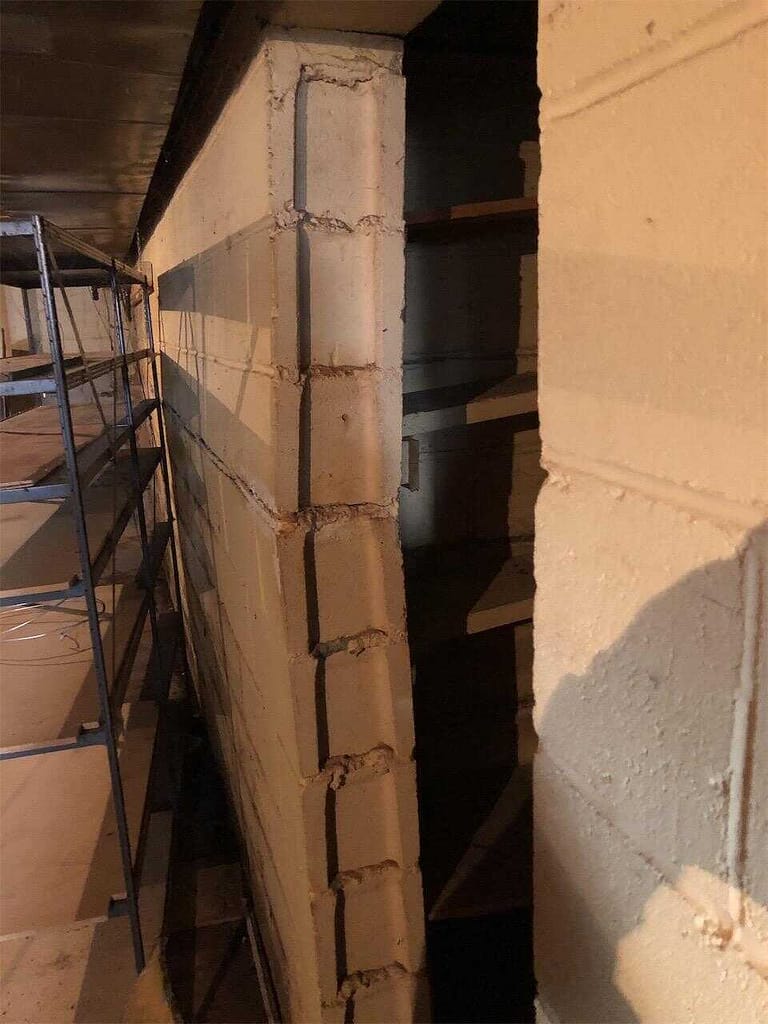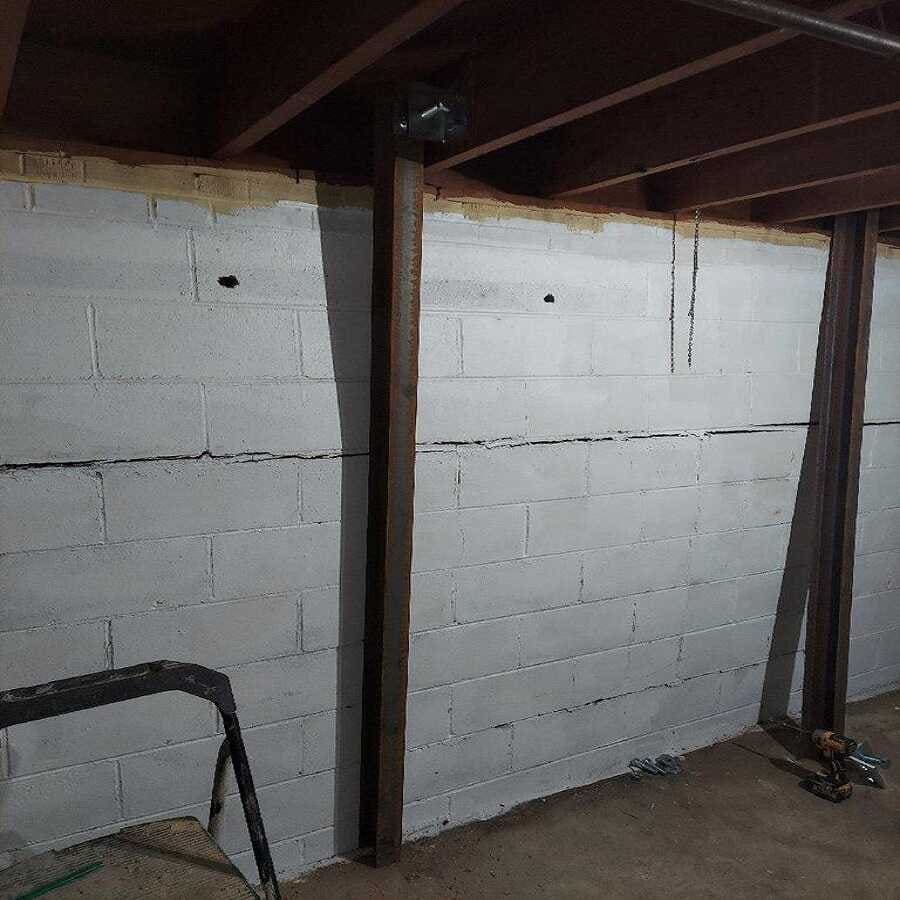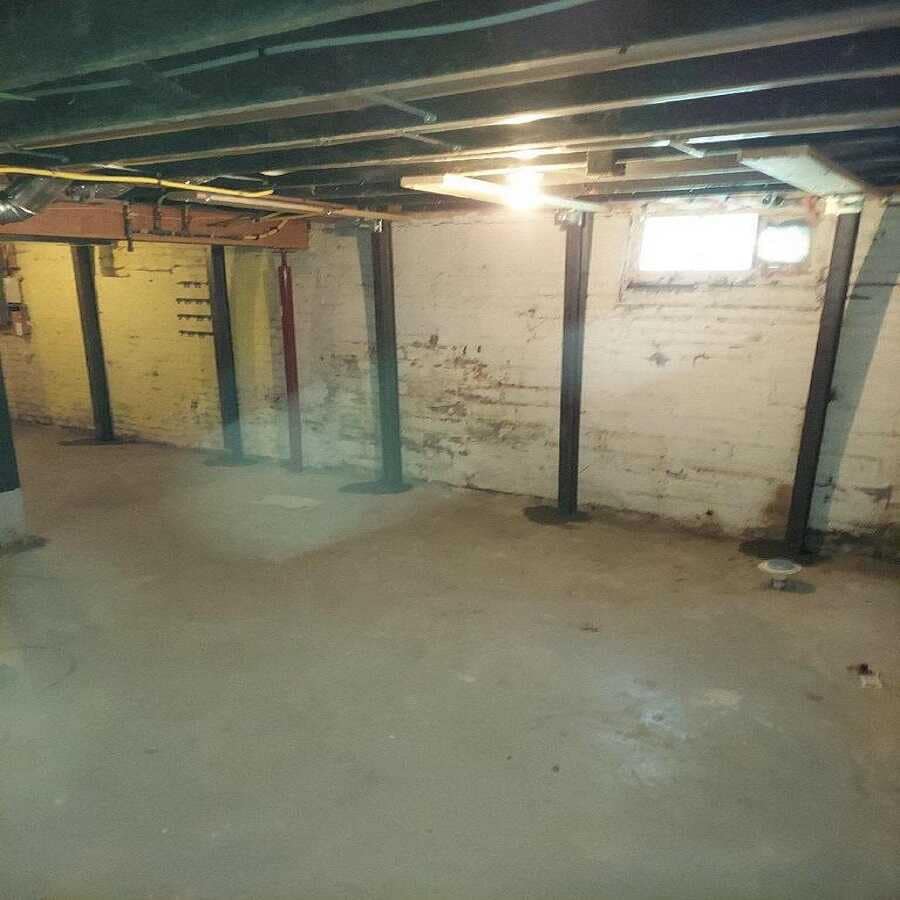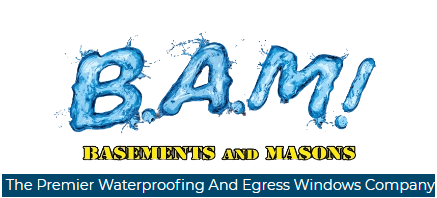Bowing Walls Retainer Walls
What does it mean when your foundation walls are bowing?
Bowing & Buckling Foundation Wall Repair In Iowa
The foundation of your home is literally that. It is the building blocks that everything else on your home rests on. If the integrity of your basement walls is compromised it is imperative you get it repaired before it gets worse.
Best case scenario – the bowing is caught early and steps are taken to stabilize the walls before any further damage occurs. Worst case scenario – the bowing wall is ignored and eventually the wall caves in, taking your home with it.
B.A.M! Basements and Masons of Des Moines can help restore your foundation walls to maximum practical recovery and help prevent any further damage from happening.
So, What are bowing walls?
Simply Put, bowing walls are basement or retaining walls that curve inward, causing water leakage, cracks, and a weakened foundation structure.
With bowing walls, the plumb line will fall outside the wall’s center of gravity. In other words, it will fall outside the middle third of the wall.


Bowing walls are usually caused by poor drainage
What causes a wall to bow?
Most often, hydrostatic pressure is the culprit. This occurs when rain water or water from snow melt is absorbed into the soil causing the soil to swell.
This causes pressure on your foundation walls and over time it will push the walls in. This is common in Iowa during spring rains and snow melts.
Other factors could be poor drainage around the home or downspouts emptying rain water close to the home. High water tables and tree roots will also cause this to occur.
Bowing walls are usually caused by poor drainage
One of the most common problems we come across is bowing foundation walls.
Normally when you see a crack that runs parallel with the floor, it is a concern. Not always will it need repair, but it should be looked at, and monitored.
There are a variety of ways to fix a bowing basement wall. The one chosen will depend on the severity of the bowing.
Normally bracing the wall with steel I-beam supports is considered.
How to repair a cracked, bowing wall.
The most effective way to repair a bowing wall is to use PowerBraces on the wall itself. These are steel I beams that are set against the wall and anchored to both the basement floor and to the floor joists.
The I beams help stabilize the wall and prevent further inward movement. With seasonal tightening of the PowerBraces sometimes complete recovery can be achieved.
Here at B.A.M! Basements and Masons of Des Moines our main priority is to stop the bowing problem in the area we address. That is why our clients rely on us.
If the wall requires more than just PowerBraces to correct the bow, we can excavate around the perimeter of the home to relieve the pressure and literally push the wall back into place from the inside, installing the PowerBraces at that time.
In some cases the wall is beyond bracing and the foundation wall needs to be replaced. B.A.M! Basements can send an expert out to your home and make a proper assessment and help guide you to the proper fix with YOU, the customer, in mind!
Normally bracing the wall with steel I-beam supports is considered.
Potential Serious Issue
Bowing walls can also crack, In fact, these types of wall cracks can even open and close depending on the weather conditions. They might open when it’s rainy, and then close as soon as the soil dries out.
The most common cause is excess moisture in the area. This can be as extreme as flooding or as mild as high humidity. The soil and clay surrounding your home put a tremendous amount of pressure on the foundation walls.

